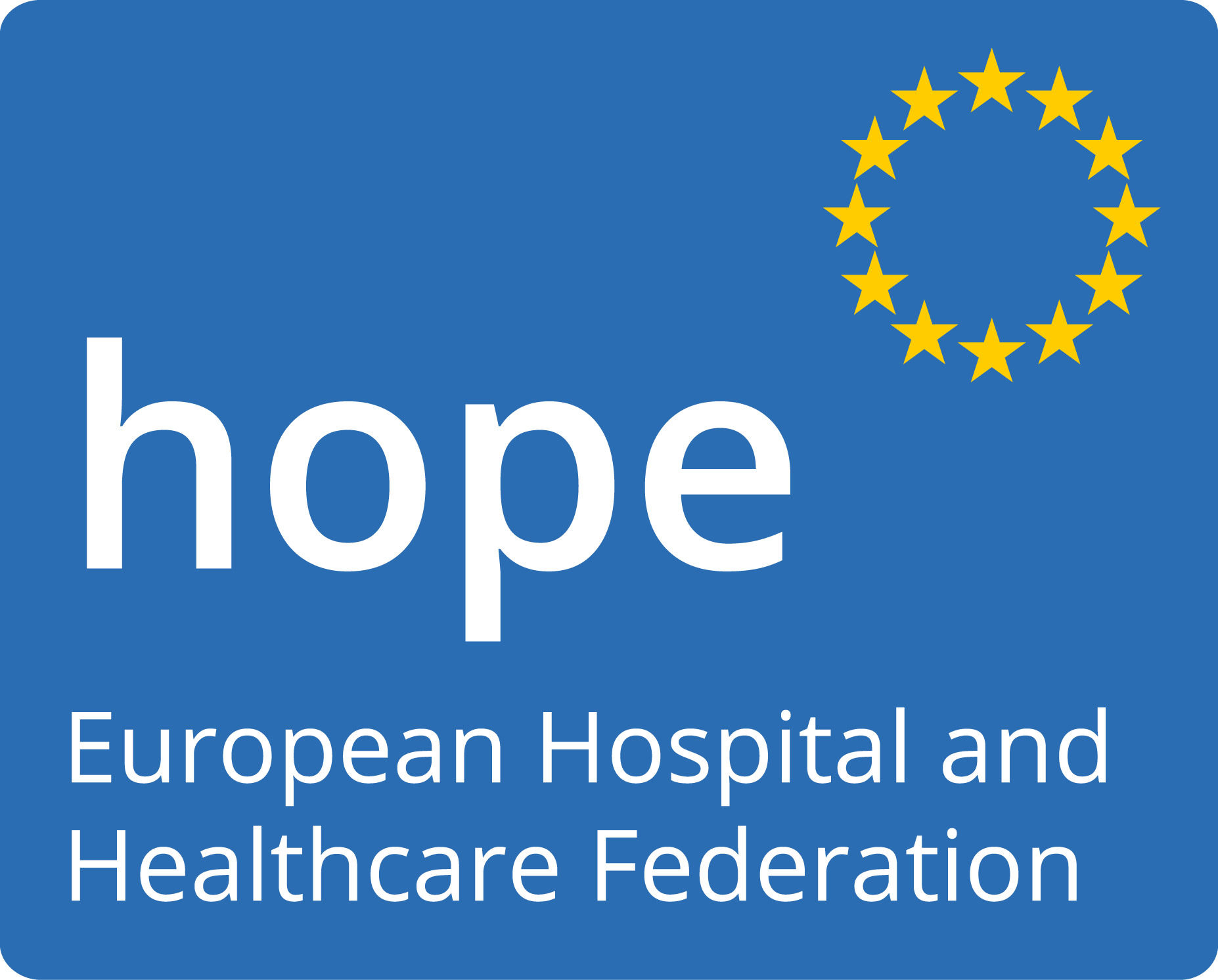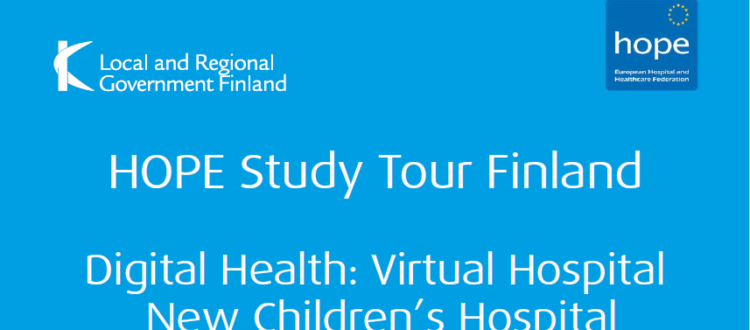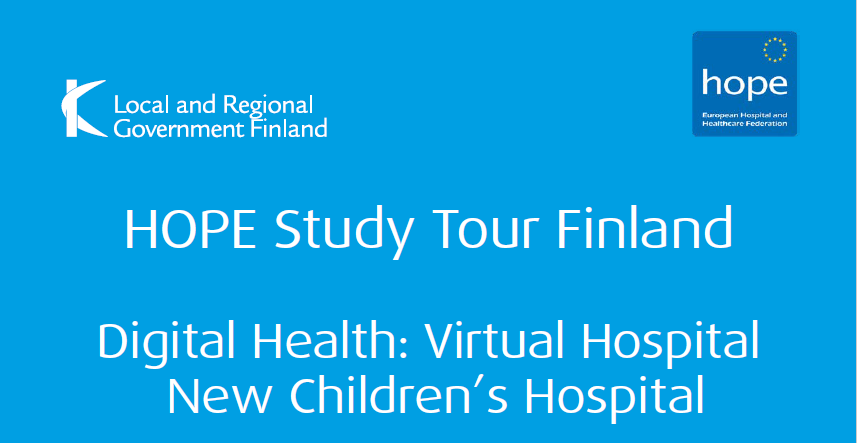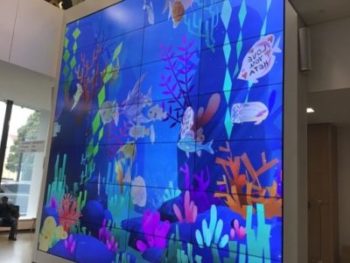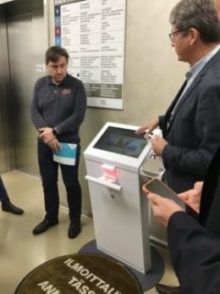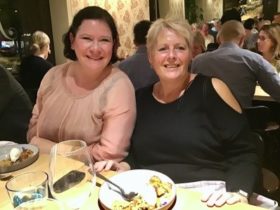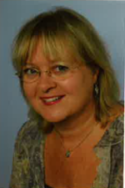DIGITAL HEALTH: Virtual Hospital in Helsinki
Collaboration, knowledge sharing and networking were high on the agenda on the recent HOPE Study Tour: Finland, which took place in Helsinki on 24-25 September 2019, and focused on the latest developments in digital healthcare. The visit was organised by the Association of Finnish Local and Regional Authorities which represents the interests of all 311 Finnish municipalities responsible for health and social care in municipalities and hospital districts across the country. The practical organisation of the tour was led by the HOPE National Co-ordinator, Ms Hannele Häkkinen, and as our guide she was efficient and welcoming from start to finish. The 19 participants were accommodated in the Hotel Katajanokka, an atmospheric, multi-award-winning boutique hotel in the centre of the city which, until 2002, was still a local prison. All transport to and from the various venues for the study tour were organised in advance, and the group was also treated to a superb networking dinner at Ravintola Kuu on the first night, featuring local Finnish cuisine and enjoyed immensely by all who attended.
The study tour participants came from a range of European countries including Cyprus, Latvia, Denmark, France, United Kingdom, Switzerland, Serbia, Germany, Luxembourg and Finland. The programme started with an overview of the structure and organisation of the Finnish health and social care system. It was noted that the Finnish Government is currently considering some major social and healthcare reorganisation for the future. The proposal is to reduce from 311 municipalities, to 18 self-governing regions (“counties”) which are larger than the municipalities, and which will take on the responsibility for organising social and healthcare services, and emergency and rescue services. In addition, 5 collaborative health areas will be created for specialised care. These areas will be centred on the current catchment areas of the 5 major university teaching hospitals in Helsinki, Tampere, Oulu, Turku and Kuopio. The Study Tour focused on Helsinki as the largest region within Finland, with 23 hospitals, almost a third of the population and still growing.
As Finland is currently holding the 6-month Presidency of the European Council the participants heard a very interesting presentation on the economics of wellbeing in the organisation of services. Finland’s objective during their Presidency of the EU Council is to stimulate an open European debate on the economics of wellbeing, and to improve policy-level understanding of the fact that universal wellbeing is a prerequisite for economic growth and for social and economic stability.
The participants also experienced site visits to Helsinki University Hospital (HUS) to learn about “Health Village” – a unique digital service platform and eHealth development programme – and the new Helsinki Children’s Hospital, which took 6 years to plan and opened 12 months ago showcasing various digital developments to support a world-class experience for young patients and their families.
So why choose Finland to visit to learn about digital health? The study tour group soon discovered that Finland is at the forefront of digital healthcare development within Europe; offering universal high-quality health services for a relatively small but demanding population, with some specialist needs in respect of certain genetic illnesses. The Finnish health and social care system is accessed in a number of ways – the public health services provided by the municipalities; occupational health schemes which cover most of the working population (87%), private health services, and a range of NGOs which complement the more formal system.
Finland has been working on developing its national health database since the 1980s, and every patient has an electronic patient record. With a relatively small and isolated population Finland is ideally placed to trial new developments in data analytics, and is investing 4% of its GDP in digital development. In addition, the country aims to be at the forefront of understanding genetic illnesses, and is on the way to ensuring 10% of the population are genotyped. The Finns are highly motivated to engage with digital solutions and “Health Village”, which started to take shape in 2014, is a national virtual hospital project with interfaces for the public, patients and health professionals.
The “Health Village” project is a national project but is based in Helsinki at HUS (Helsinki University Hospital) which is the second largest employer in Finland with almost 25,000 staff. The national healthcare database provides a huge “data lake” which feeds the various developments offered by the eHealth development programme. The system is accessible to all Finns, regardless of their place of residence or income, and is a practical tool to guide them in both everyday life and self-care, and also when they are in contact with professional health services. The digital platform is supported by almost 2000 healthcare professionals who lead the development of disease pathway management; evidence-based cost control; patient and health professional education and predictive medicine.
Every patient has a “My Path” customer account, and he or she is enabled to navigate their own way through the system. There are at present 32 disease-based information hubs, which have been designed by health professionals, and more are being added all the time. The emphasis for the patient facing part of the platform is on non-technical language with advice for patients on how to present to health services to get the best results for their symptoms. Patients can access the information anonymously without being tracked, and each pathway is a medical device (CE marked and designed by clinicians). The experience so far is that contacts to health professionals have reduced as patients have much more information about their own personal condition. Where medical or nursing advice is shared with the patient, this advice is recorded on the patient’s individual electronic patient record.
What was most impressive was the way the digital platform allowed for the development of predictive medicine; both in terms of the way diseases will develop for individuals, and in terms of the individual’s likelihood to engage with the treatment plan. The system highlights those patients who will need extra professional health to stay on track. Health Village therefore complements traditional treatment pathways by supporting operational change tailored to the individual rather than just digitalising old services.
There is much the Study Tour participants can learn from the way Health Village has been developed. The core principles involve the continual engagement of patients and the public; the development of clinical content by clinicians; the scalability of services (once designed) to increase patient education and self-care and reduce face to face clinical contacts; and the use of highly developed data analytics to learn from the experience of the whole national database to focus interventions on the needs of the individual. The opportunities for medical education and research are enormous, and at present the HUS Informatics teams are working on how to automatically integrate patient contacts with the system into the individual electronic patient record to provide comprehensive data on every individual patient.
The security for this national service is via strong ID (similar to the systems used by the banking sector) and at all times the citizen can choose how much of their individual data from the national data lake is shared and with whom. It seems that the biggest challenge will be keeping the medical pathways up to date and there is already a maintenance schedule for the pathways – the same as for medical devices. HUS is currently looking for international partners to globalise the ideas developed within Health Village; their vision is for an international data platform to inform the future of medicine.
The visit to the New Children`s Hospital in Helsinki was much anticipated by the Study Tour participants as a number of countries are planning new Paediatric or Women & Children’s hospitals in the next 5 years. The Helsinki Children’s Hospital opened in September 2018 and is the leading provider of specialised health care for paediatric patients in Finland. Funded by both donations and taxes, the New Children’s Hospital was awarded the Finlandia Prize for Architecture in 2018 for its state-of-the-art technology blended with the human touch. The Hospital has 140 beds and employs 800 nurses, 300 medical doctors and 200 other specialist staff members.
On arrival in the main entrance, with its impressive interactive digital fish tank, it is plain to see that the experience of children and their families has been integral to the design and development of New Children`s Hospital. Family advisory councils shared their views on digital services, artwork and the facilities in patient rooms, and on the intensive care unit. An adolescent panel also gave their opinion on the development of the services to be provided, and the delivery of treatments and examinations. The use of the most modern digital technology was evident throughout the hospital to improve the patient experience, and to put children and adolescents at ease when receiving services.
On arrival children are asked to check into a kiosk to record their attendance and to track their location within the hospital. The child is asked to choose from one of over 200 avatars, and this is then personalised to their care record for that visit to allow them to be identified and called for in public areas without any breach of patient confidentiality; all whilst maintaining a fun talking point for the child with their carers and health professionals.
The healing power of art and play has a significant role in recovery, and the hospital has special permission from the family of the late Tove Jansson to use the illustrations and quotes from the Moomin stories on every one of the 8 levels. The interactive digital marine aquarium in the main atrium allows children to write messages on a piece of paper and post them in a box. The messages can then be scanned in and will appear on the sides of the fish swimming in the tank, much to the delight of the child.
Digital solutions are now integral to modern medical care and the hospital works closely with Health Village to allow Artificial intelligence (AI) to speed up the prediction and treatment of serious infections in preterm babies in the Intensive Care Unit (ICU). Physically disabled patients in need of demanding surgery can be examined in the gait analysis laboratory, and the information gathered leads to improved outcomes. New methods for examining a patient’s movements are currently being developed so that analysis can be carried out at home; and Video-EEG is used in variety of ways when planning surgery for epilepsy. New methods of cellular therapy enhance the treatment of malignant diseases, and improve the prognoses of patients, and all this work is supported by the impressive big scale data analysis possible from the national database.
The HOPE Study Tour in Helsinki was excellent value for money. A huge amount of information on relevant developments in modern healthcare was shared within a very short space of time, and there was ample opportunity to meet and network with health management peers across Europe. The Finns should be proud of the advances they have made already in digital healthcare, and applauded for their willingness to share their knowledge with colleagues in others countries.
This newsletter article was written as a collaborative piece by Roberta Fuller & Debra Shields from the Royal Cornwall Hospital in the UK, and Doris Voit from the German Hospital Federation.
Contact: Ms Hannele Häkkinen, Association of Finnish Local and Regional Authorities, hannele.hakkinen@aflra.fi
